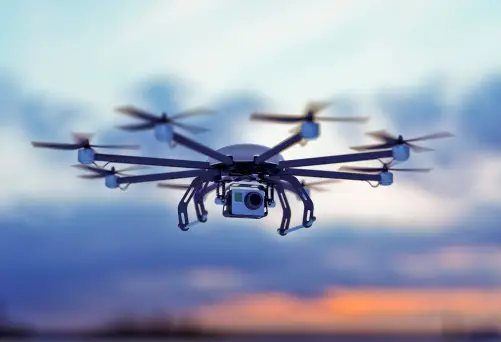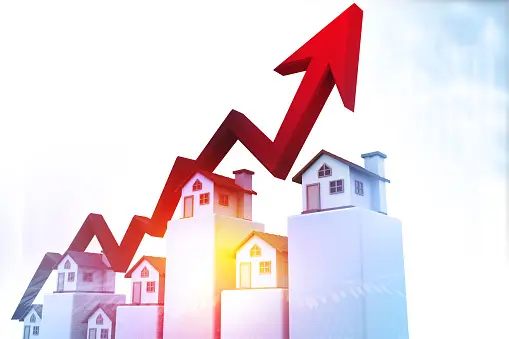Power Up Your Efficiency: Drones Redefine Substation Surveillance

In infrastructure management, substation surveillance ensures operational efficiency and reliability. Traditionally, this task has been labor-intensive and time-consuming, often requiring manual inspections conducted by personnel on foot or in vehicles. However, with the advent of Drones for Substation Monitoring, a paradigm shift has occurred in how substations are monitored and managed.
Enhancing Operational Efficiency
Drones for substation monitoring offer many advantages regarding substation surveillance, foremost among them being the significant enhancement of operational efficiency. Equipped with advanced cameras and sensors, these can swiftly navigate the complex terrain of substations, capturing high-resolution images and data from vantage points that would otherwise be inaccessible or hazardous for human inspectors.
Precision and Accuracy
One key benefit of utilizing drones for substation surveillance is the unparalleled precision and accuracy they bring to the task. Unlike manual inspections, prone to human error and subjectivity, drones follow pre-programmed flight paths with pinpoint accuracy, ensuring comprehensive coverage of the entire substation area. This level of precision reduces the likelihood of oversight and enables operators to identify potential issues and anomalies with greater certainty.
Cost-Effectiveness
In addition to improving operational efficiency, drones offer a cost-effective solution for substation surveillance. By minimizing the need for labor and reducing the risk of injuries associated with traditional inspection methods, drones help utility companies save time and money in the long run. Moreover, the data collected by drones can facilitate predictive maintenance strategies, allowing for proactive identification and resolution of problems before they escalate into costly disruptions.
Enhanced Safety
Safety is paramount in managing substations, which often house high-voltage equipment and infrastructure. Drones mitigate the risks associated with manual inspections by eliminating the need for personnel to enter hazardous or hard-to-reach areas. This not only protects the safety of workers but also minimizes the potential for accidents or injuries, thereby enhancing overall safety protocols within the substation environment.
Real-Time Monitoring and Analysis
Expanding on drones’ real-time monitoring and analysis capability, their advanced imaging technology and data processing capabilities enable swift identification and assessment of potential issues within substations. Equipped with high-resolution cameras and sensors, drones can detect signs of equipment malfunction, structural damage, or vegetation encroachment with remarkable accuracy. This timely detection empowers operators to make informed decisions and take immediate corrective action, minimizing downtime and maximizing operational uptime.
Furthermore, the real-time data provided by drones allows for proactive maintenance strategies, enabling operators to address issues before they escalate into costly disruptions. Drones facilitate predictive analytics by continuously monitoring substation assets, enhancing asset reliability and extending lifespan. This proactive approach reduces maintenance costs and enhances overall operational efficiency.
Moreover, drones’ ability to access hard-to-reach or hazardous areas within substations enhances safety protocols by minimizing the need for manual inspections. By providing comprehensive coverage of the substation environment from aerial perspectives, drones mitigate the risks associated with human intervention, ensuring a safer working environment for maintenance personnel. Overall, drones’ real-time monitoring and analysis capabilities significantly contribute to substation operations’ reliability, safety, and efficiency.
Environmental Benefits
Moreover, the environmental benefits of drones extend beyond emissions reduction and habitat preservation. By minimizing the disturbance caused by traditional inspection methods, drones help maintain the ecological balance of surrounding areas, preserving biodiversity and minimizing disruption to sensitive ecosystems. Additionally, the data gathered by drones can be leveraged to develop proactive environmental management plans, such as identifying erosion areas or assessing human activity’s impact on wildlife habitats. Through these measures, drones contribute to the sustainable management of natural resources and promote harmony between infrastructure development and environmental conservation. As industries worldwide strive to adopt more environmentally friendly practices, the role of drones in substation surveillance emerges not only as a technological advancement but also as a vital tool in promoting ecological stewardship and sustainable development.
Future Outlook
Continued technological advancements are poised to propel drones into an even more prominent role in substation surveillance. Innovations in AI and machine learning algorithms are anticipated to empower drones with enhanced analytical capabilities, enabling them to detect and interpret data with unprecedented accuracy and speed. This, coupled with advancements in autonomous flight systems, will further streamline the monitoring and management of substation assets, reducing the need for human intervention and increasing operational efficiency.
Furthermore, ongoing research and development efforts are dedicated to bolstering drones’ durability, reliability, and endurance, ensuring their resilience in challenging environmental conditions. Drones are engineered to withstand various adverse factors, from extreme temperatures to inclement weather, while maintaining peak performance. Additionally, improvements in battery technology and power management systems are extending drones’ flight times, allowing for prolonged missions and more comprehensive surveillance coverage.
As these technological advancements continue to mature, the future of substation surveillance with drones appears increasingly promising. With their ability to deliver unparalleled efficiency, accuracy, and reliability, drones are poised to play an indispensable role in ensuring the integrity and security of critical infrastructure for years to come.
Conclusion
In conclusion, drones have emerged as a game-changing technology in substation surveillance, offering unparalleled efficiency, precision, and cost-effectiveness. By leveraging drone capabilities, utility companies can enhance operational efficiency, improve safety protocols, and minimize environmental impact, ultimately ensuring the reliability and resilience of critical infrastructure.



